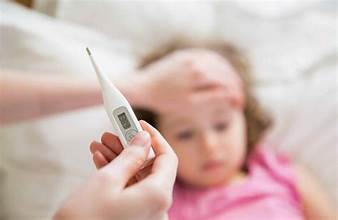Childhood is a critical stage of development, and ensuring good health during this period lays the foundation for a lifetime of well-being. However, children are particularly vulnerable to various diseases due to their developing immune systems. Understanding the common childhood diseases, their symptoms, prevention, and treatment options can empower parents and caregivers to protect children effectively. This article explores the most prevalent childhood diseases, strategies for prevention, and the importance of timely medical intervention.
Why Are Children More Susceptible to Diseases?
Children are more prone to illnesses because:
- Immature Immune Systems: Young immune systems are still learning to identify and fight pathogens.
- Close Contact: Schools, daycare centers, and playgrounds expose children to various germs.
- Hand-to-Mouth Behavior: Young children often put their hands or objects in their mouths, increasing the risk of infections.
Common Childhood Diseases
1. Common Cold
- Cause: Viruses like rhinoviruses.
- Symptoms: Runny nose, cough, sneezing, mild fever, and sore throat.
- Prevention:
- Encourage frequent handwashing.
- Avoid close contact with sick individuals.
- Treatment:
- Provide rest, hydration, and over-the-counter medications to alleviate symptoms.
2. Chickenpox
- Cause: Varicella-zoster virus.
- Symptoms: Itchy rash, fever, and fatigue.
- Prevention:
- Vaccination is highly effective.
- Treatment:
- Use antihistamines and calamine lotion for itching.
- Maintain good hygiene to prevent secondary infections.
3. Measles
- Cause: Measles virus.
- Symptoms: High fever, cough, runny nose, red eyes, and a characteristic rash.
- Prevention:
- Measles, Mumps, and Rubella (MMR) vaccine.
- Treatment:
- Supportive care includes rest, hydration, and fever management.
4. Hand, Foot, and Mouth Disease (HFMD)
- Cause: Coxsackievirus.
- Symptoms: Fever, sores in the mouth, and a rash on hands and feet.
- Prevention:
- Frequent handwashing and disinfecting surfaces.
- Treatment:
- Pain relievers and mouthwashes to ease discomfort.
5. Ear Infections
- Cause: Bacteria or viruses.
- Symptoms: Ear pain, difficulty hearing, fever, and irritability.
- Prevention:
- Avoid exposure to secondhand smoke.
- Ensure timely vaccination.
- Treatment:
- Antibiotics for bacterial infections and over-the-counter pain relievers.
6. Whooping Cough (Pertussis)
- Cause: Bordetella pertussis bacteria.
- Symptoms: Severe coughing fits followed by a “whooping” sound.
- Prevention:
- DTaP vaccine.
- Treatment:
- Antibiotics and supportive care.
7. Strep Throat
- Cause: Group A Streptococcus bacteria.
- Symptoms: Sore throat, fever, swollen lymph nodes, and white patches on the tonsils.
- Prevention:
- Avoid sharing utensils and maintain good hygiene.
- Treatment:
- Antibiotics prescribed by a doctor.
8. Asthma
- Cause: Chronic inflammation of the airways, often triggered by allergens or infections.
- Symptoms: Wheezing, coughing, shortness of breath, and chest tightness.
- Prevention:
- Identify and avoid triggers.
- Treatment:
- Use inhalers and follow a long-term management plan.
Importance of Vaccination
Vaccination is a cornerstone of childhood disease prevention. Immunizations protect against potentially severe illnesses like:
- Polio
- Hepatitis B
- Meningitis
- Rotavirus
Tips for Ensuring Vaccination Compliance:
- Maintain a vaccination schedule.
- Keep a record of immunizations.
- Discuss concerns with a pediatrician.
Nutritional Support for Healthy Immunity
A balanced diet strengthens a child’s immune system, reducing susceptibility to diseases. Key nutrients include:
- Vitamin C: Found in citrus fruits, strawberries, and bell peppers.
- Vitamin D: Supports bone health and immunity. Obtain from sunlight, fortified foods, and supplements if necessary.
- Zinc: Present in nuts, seeds, and whole grains.
- Probiotics: Found in yogurt and fermented foods, they promote gut health.
Hygiene Practices to Prevent Childhood Diseases
- Regular Handwashing:
- Teach children to wash their hands before eating, after using the bathroom, and after playing.
- Proper Sneezing and Coughing Etiquette:
- Encourage covering mouths with elbows, not hands.
- Sanitizing Toys and Surfaces:
- Regular cleaning reduces the spread of germs.
Recognizing Warning Signs
Early detection of serious illnesses can save lives. Watch for:
- High fever persisting for more than 3 days.
- Severe abdominal pain.
- Difficulty breathing.
- Persistent vomiting or diarrhea leading to dehydration.
- Unusual lethargy or irritability.
Role of Parents and Caregivers
Parents and caregivers play a crucial role in preventing and managing childhood diseases:
- Stay Informed:
- Keep up with the latest guidelines on vaccinations and preventive care.
- Promote Healthy Habits:
- Encourage nutritious eating, physical activity, and sufficient sleep.
- Establish a Relationship with a Pediatrician:
- Regular check-ups ensure early detection and intervention.
- Monitor Development:
- Be alert to developmental milestones and address concerns promptly.
When to Seek Medical Attention
While many childhood illnesses resolve with home care, some require professional intervention:
- High fever with rash.
- Difficulty swallowing or drooling excessively.
- Signs of dehydration (dry mouth, lack of tears, reduced urination).
- Rapid breathing or bluish lips.
Future Trends in Managing Childhood Diseases
- Telemedicine:
- Virtual consultations make healthcare more accessible.
- Advances in Vaccines:
- Development of vaccines for emerging diseases.
- Genetic Screening:
- Early detection of genetic predispositions to illnesses.
- Health Education:
- Increased awareness campaigns for parents and schools.
Conclusion
Childhood diseases are an inevitable part of growing up, but many can be prevented or effectively managed through proper care, hygiene, and timely medical intervention. Parents and caregivers must remain vigilant and proactive, ensuring their children receive the best possible start in life. By combining preventive measures, nutritional support, and access to healthcare, we can protect children’s health and help them thrive.

